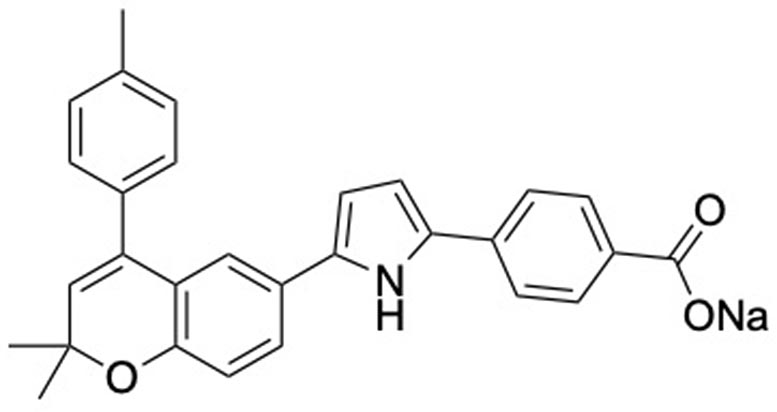Les femmes ont de nombreux choix en matière de contraception, allant des pilules aux patchs en passant par les dispositifs intra-utérins, et c’est en partie pour cette raison qu’elles assument la plus grande partie de la prévention des grossesses. Mais les options de contrôle des naissances des hommes – et, par conséquent, leurs responsabilités – pourraient bientôt s’élargir. Aujourd’hui, des scientifiques font état d’un contraceptif masculin non hormonal qui prévient efficacement la grossesse chez la souris, sans effets secondaires évidents.
Les chercheurs ont présenté leurs résultats cette semaine lors de la réunion de printemps de l’American Chemical Society (ACS). L’ACS Spring 2022 est une réunion hybride qui s’est tenue virtuellement et en personne du 20 au 24 mars, avec un accès à la demande disponible du 21 mars au 8 avril. La réunion comprend plus de 12 000 présentations sur un large éventail de sujets scientifiques.
Actuellement, les hommes n’ont que deux options efficaces de contrôle des naissances : les préservatifs masculins et la vasectomie. Cependant, les préservatifs sont à usage unique et sont susceptibles de ne pas fonctionner. En revanche, la vasectomie – une intervention chirurgicale – est considérée comme une forme permanente de stérilisation masculine. Bien que les vasectomies puissent parfois être inversées, la chirurgie d’inversion est coûteuse et ne réussit pas toujours. Les hommes ont donc besoin d’un contraceptif efficace, durable mais réversible, semblable à la pilule contraceptive pour les femmes.

Un contraceptif masculin non hormonal (connu sous le nom de YCT529 ; structure illustrée ici) empêche la grossesse chez les souris en bloquant un récepteur de la vitamine A, sans effets secondaires évidents. Crédit : Md Abdullah Al Noman
“Les scientifiques essaient depuis des décennies de mettre au point un contraceptif oral masculin efficace, mais il n’y a toujours pas de pilule approuvée sur le marché”, explique Md Abdullah Al Noman, qui présente ces travaux lors de la réunion. La plupart des composés qui font actuellement l’objet d’essais cliniques ciblent l’hormone sexuelle mâle, la testostérone, ce qui peut entraîner des effets secondaires tels que la prise de poids, la dépression et l’augmentation du taux de cholestérol des lipoprotéines de basse densité (connues sous le nom de LDL). “Nous voulions mettre au point un contraceptif masculin non hormonal pour éviter ces effets secondaires”, explique Noman, étudiant diplômé dans le laboratoire de Gunda Georg, Ph.D., à l’université du Minnesota.
Pour mettre au point leur contraceptif masculin non hormonal, les chercheurs ont ciblé une protéine appelée rétinoïque acid receptor alpha (RAR-a). This protein is one of a family of three nuclear receptors that bind retinoic acid, a form of vitamin A that plays important roles in cell growth, differentiation (including sperm formation) and embryonic development. Knocking out the RAR-a gene in male mice makes them sterile, without any obvious side effects. Other scientists have developed an oral compound that inhibits all three members of the RAR family (RAR-a, -ß and -?) and causes reversible sterility in male mice, but Georg’s team and their reproductive biology collaborators wanted to find a drug that was specific for RAR-a and therefore less likely to cause side effects.
So the researchers closely examined crystal structures of RAR-a, -ß and -? bound to retinoic acid, identifying structural differences in the ways the three receptors bind to their common ligand. With this information, they designed and synthesized approximately 100 compounds and evaluated their ability to selectively inhibit RAR-a in cells. They identified a compound, which was named YCT529, that inhibited RAR-a almost 500 times more potently than it did RAR-ß and -?. When given orally to male mice for 4 weeks, YCT529 dramatically reduced sperm counts and was 99% effective in preventing pregnancy, without any observable side effects. The mice could father pups again 4-6 weeks after they stopped receiving the compound.
According to Georg, YCT529 will begin testing in human clinical trials in the third or fourth quarter of 2022. “Because it can be difficult to predict if a compound that looks good in animal studies will also pan out in human trials, we’re currently exploring other compounds, as well,” she says. To identify these next-generation compounds, the researchers are both modifying the existing compound and testing new structural scaffolds. They hope that their efforts will finally bring the elusive oral male contraceptive to fruition.
The researchers acknowledge support and funding from the National Institutes of Health and the Male Contraceptive Initiative. Georg is a consultant with YourChoice Therapeutics.
Title
Development of selective RARa antagonists as male contraceptive agents
Abstract
The quest for an effective male contraceptive agent has begun decades ago with no approved pills to date. Compounds undergoing clinical trials are all targeted on male sex hormone testosterone which could lead to hormonal side effects such as weight gain, depression, increased low-density lipoproteins, etc. Our effort focused on developing a non-hormonal male contraceptive to avoid the hormonal side effects. Vitamin A has long been known to be essential for male fertility and vitamin-A-deficient diet causes mammalian male sterility. One particular receptor of vitamin A metabolite retinoic acid (RARa) is validated as the target for male contraception by gene knockout studies. Also, oral administration pan-RAR antagonist BMS-189453 which inhibits the activity of RAR a, ß, and ? lead to reversible sterility in male mice. Knocking out RAR alpha and treatment with a pan-RAR antagonist did not present any significant side effects in mice. We pursued to develop a selective RARa antagonist as a safe, effective, and reversible male contraceptive agent with no off-target effects on RARß and RAR?. Based on the published crystal structures of RARa-ligand complex as well as structures elucidated by us, we envisioned to exploit the structural differences between RARa, ß, and ? ligand-binding domain to achieve RARa selectivity. Also, the structural differences between RARa bound to the agonist and the antagonist facilitated the design of full antagonists. Aided by all the structural information, we designed and synthesized about 100 compounds and evaluated RARa antagonist activity and selectivity using a luciferase-reporter cell assay. We obtained several antagonists with single-digit nanomolar IC50 values for RARa with excellent selectivity over RARß and RAR?. One RARa-selective antagonist showed good oral bioavailability and desired pharmacokinetic properties in mice, and upon oral administration, it showed complete inhibition of embryo formation in mating studies. Modification of active compounds is ongoing to obtain additional potent and selective inhibitors with good pharmacodynamic and pharmacokinetic properties.




